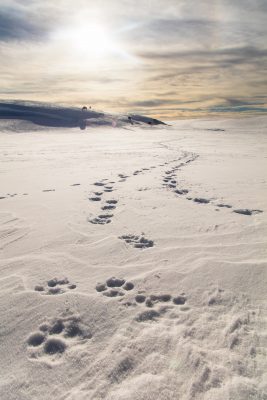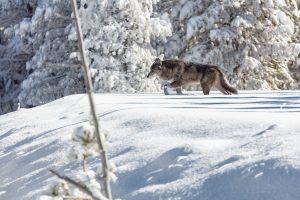 One of the delights of visiting Yellowstone in winter is viewing the park’s abundant wildlife in their natural habit. From bison to fox to wolves, these magnificent animals are much more visible against a blanket of white snow.
One of the delights of visiting Yellowstone in winter is viewing the park’s abundant wildlife in their natural habit. From bison to fox to wolves, these magnificent animals are much more visible against a blanket of white snow.
For many, it is just as exciting to look for the tracks and prints these animals’ have left behind. If you look with a careful eye, you’ll notice a wide variety of animal tracks crisscrossing the park. While some such as grizzly bears hibernate, others tromp, trudge, meander, scurry, and slide through the snowy landscape in order to survive and thrive in winter.
 These tracks are a record of what has occurred in the recent past. Animals movements are carefully calculated in order to best conserve energy in these harsh conditions. Maybe a coyote has scampered along in search of food, a jackrabbit has moved from one tree cover to the next, a family of river otters have slid along the shore of the Yellowstone River, or a migrating line of bison has trudged through two feet of snow.
These tracks are a record of what has occurred in the recent past. Animals movements are carefully calculated in order to best conserve energy in these harsh conditions. Maybe a coyote has scampered along in search of food, a jackrabbit has moved from one tree cover to the next, a family of river otters have slid along the shore of the Yellowstone River, or a migrating line of bison has trudged through two feet of snow.
Part of the fun of finding these tracks in the snow is to investigate and guess which mammal or bird they belong to. How big are the tracks? How far apart? Was it a fox or coyote? Jackrabbit or pine marten? Cougar or wolf?
Next time you are visiting Yellowstone in winter, or even in your own backyard, keep a watchful eye on the ground for a unique way of experiencing and understanding the lives of wild animals.

Take one of our popular animal tracking courses through the Yellowstone Forever Institute!
Photos courtesy of NPS
Comments are closed.